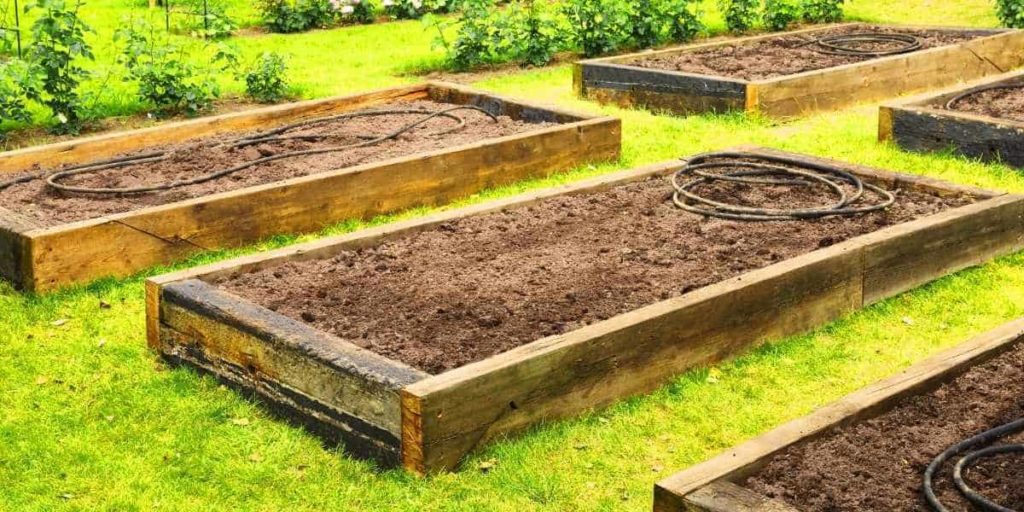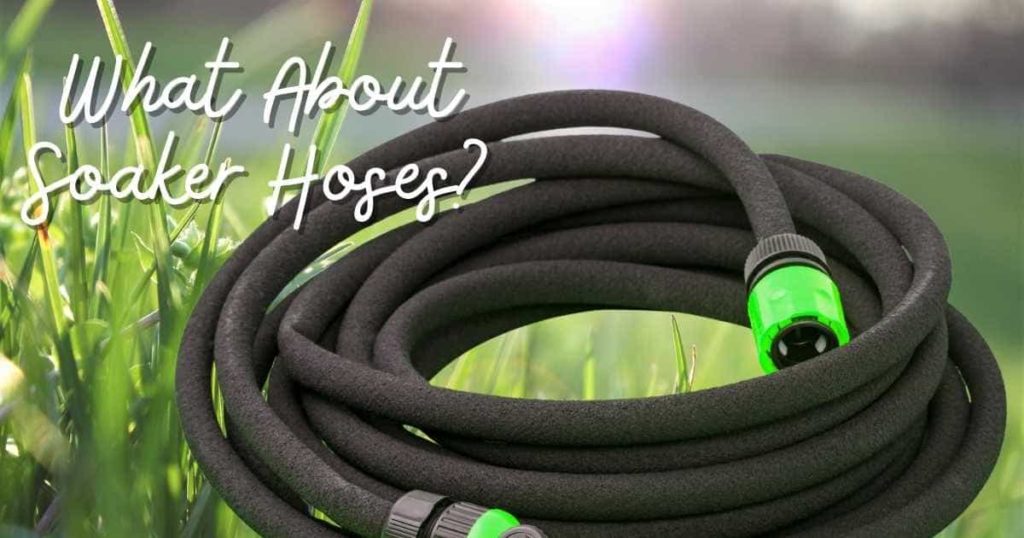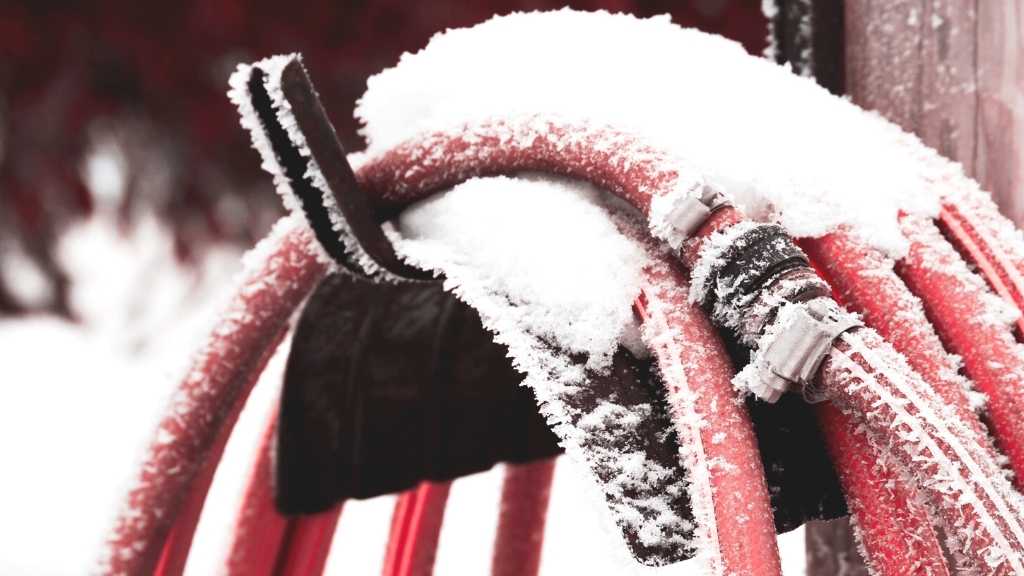If you are looking for a quick and easy solution to make sure your garden plants receive the correct amount of water that they need, in a constant, slow but steady manner, and with minimum intervention on your side, look no more!
Choose to use a soaker hose for your garden! No matter if you grow decorative plants, flowers, or vegetables, a soaker hose could save you a lot of time that you would otherwise be spent watering the garden.
These are the 10 simple steps to consider in order to properly start using a soaker hose in a vegetable garden:
1. Make a garden plan
Make a garden plan to better understand where the plants that need watering are, where the outdoor spigots are, and what would be the most efficient setup for the soakers in order to have all the desired garden space covered.
2. Decide the shape in which the soaker is laid on the ground
Decide the shape in which the soaker is laid on the ground. You can choose from a huge pallet of options in terms of how the soaker will be guided along with the garden. It can be laid down in straight lines, in different loops around specific plants, in an S shape, Z shape, 8 shapes, or snake shape, all up to your personal choice and garden area specifics.
3. Measure the entire length
Measure the entire length, considering the shape design that you decided above, to better understand which is the soaker hose length that you will need. In case the garden has different sections, you can easily use more soaker hoses and connect them to different water sources or to the same water source by using a hose splitter fitting.
Another option is to buy a long soaker hose and cut it into more pieces to create more soakers. In case you choose this option, additional male and female fittings will be necessary as well as a soaker hose that comes with a single set of the male and female fittings.
Buy a soaker hose that is at least half-inch in diameter as they last longer and the fittings for soakers that are ½ inch or thicker are easier to find.
4. Uncoil the soaker hose and lay it down straight on a plain surface
Uncoil the soaker hose and lay it down straight on a plain surface. Let it sit in direct sun for about one hour until it will lose the loop shape and warm up so you can easily set up the soaker hose into the shape you decided.
5. Attach hose fittings
Attach the male cap fitting on one end and the female fitting on the other end of the soaker hose. The female end connects the soaker to the water supply, either if it is a spigot or a garden hose end.
6. Install a water timer on the spigot
Install a water timer on the spigot that supplies water to the soaker hose. This is an optional step, but we highly recommend getting such an accessory. You use it to program different watering start/stop timeframes, set a specific hour when the watering process should start, and a specific period of time in which the soaker hose is watering. The water timer connects on one side to the spigot and on the other to the hose. There are several models available within different price ranges. For sure you will not have any trouble finding the one that best suits your needs.
Another optional accessory in case you have some concerns about the water debris that might clog your soakers is a hose thread screen filter. It is designed to connect on one side directly to the spigot and on the other to the water timer or directly to the garden hose if you decide not to use a water timer.
7. Layout the soaker hose on the soil surface
Layout the soaker hose on the soil surface, in the desired shape, throughout a specific garden section first, or a garden bed.
8. Connect the soaker hose to the water supply
Connect it to the water supply. This can be attached directly to the water pipe spigot if you have one in your garden. Or you can connect the soaker to a standard garden hose that is then attached to an outdoor spigot.
9. Run a test to see if there is any leakage on the soaker end connections
10. Spread a thin layer of organic mulch over the soil
Spread a thin layer of organic mulch over the soil, covering the soaker hose as well. This is an optional step but very effective as it will lock in the soil moist for a longer period of time, preventing water evaporation, decreasing the watering frequency needs, and saving water in a long term.
3 Useful Tips To Easily Instal a Soaker Hose
Tip #1 – Use hose splitter fittings.
Use a hose splitter on the spigot and connect the water timer and soaker hose on one spigot connector, and the normal garden hose on the other spigot connector.
Or you can use a T shape connector fitting to connect two garden hoses and get the water closer to the area where the soaker hoses are installed.
Tip # 2 – Use hose wire staples or ground stakes to hold the soaker hose in place while you are laying it out around the garden.
It is very easy to create a wire staple for the hose. How to do it yourself? Buy a strong and malleable metal wire, cut small sections using a wire cutter, bend them in half in a U shape, flip it as an upside-down U and press it around the soaker, into the ground. This will hold the soaker in place and keep it steady.
Tip # 3 – Increase the water flow in the soaker by removing the flow regulator in the female fitting
If you notice the water doesn’t drip evenly on the entire length of the soaker, this might be due to the flow regulators that are now installed on the female fittings. The flow regulator looks like a small disc with a pinhole in the middle and it is normally a different color than the female fitting itself. Removing it might highly improve the water flow throughout the entire soaker hose.
How Often Should I Water the Vegetable Garden With a Soaker Hose?

There is no exact answer to this question as there are many variables involved. Nobody can determine precisely what watering frequency is best for all the gardens. But it can be determined in a case-by-case scenario, by checking specific factors on a regular basis. The garden watering frequency depends on the soil type, the plant watering needs, weather conditions, and season.
In general, a soaker hose is used one time per day during the summer season, in the evening. This gives time to the plant roots to collect the water made available in the soil during the entire night, as the evaporation process is considerably slowed down. You can consider using it two times per day, in the morning and in the evening, during the extremely hot periods of the season.
In the spring and fall, when the temperatures are not as high and when it is raining more often, you can consider turning on the soaker every 3 or 4 days.
Weather forecast always counts in deciding if watering the garden, as there is no need to water on a rainy day or on the days that follow a heavy rain or a full rainy day.
The dryness of the soil can also be checked from time to time after regular use of a soaker hose, to better understand how long it takes for the soil to dry between two watering sessions. Depending on the results you can decide to water it more often or on the same schedule but with increasing the watering timeframe.
How Long to Run a Soaker Hose in the Vegetable Garden?
The short answer to this question is, it depends. The variables mentioned above are valid for both how frequent and for how long a soaker hose should run.
So, to know for how long to run a soaker hose, you will again need to consider the soil type, the plants watering needs, weather conditions, and season. Usually, running the soaker for up to 30 minutes in the garden and 20 minutes in a garden bed is enough.
However, the best way to figure out how long is enough for each specific case is to do small tests at the beginning, by checking the soil dryness and plant sturdiness while running a specific watering timeframe. If the plants show any bad signs or changes, depending on what the problem is, you can consider increasing or decreasing the timeframe when the soaker is running.
It may sound difficult, but you will need to find the perfect balance between underwatering and overwatering your plants and you can only find it in time, by testing different scenarios.
Among the most common signs that a plant needs water is that it can suddenly have a withered appearance.
On the opposite, the signs that a plant received excessive watering are:
- the leaves change their color to a yellowish-brown color
- the plant stops growing – this can also be a sign the plant roots are rotten
- the leaves start falling
- the plant stem develops mold
How Long to Use A Soaker Hose in The Garden on Potatoes?
Unlike other vegetables that we grow in our garden, potatoes have a different water need. Of course, they do need regular watering, especially in the first 60 to 90 days after planting. The difference is they need less volume of water per watering session. In rainy regions, the water provided naturally is usually enough. And in regions where drought is specific to the warm season, they will need additional watering.
As for our case, we live in an area where there is a mix of drought and rainy days during the season.
In the first month after planting, we make sure to check the soil and water every second or third day for 15 to 20 minutes. In the next 30 to 60 days we water daily for about 20 to 30 minutes, on the days with no rain. We skip watering on rainy days. After the first 90 days since planting, we only water them once per week, in case of no rainfall during the week. The total watering time per session is 20 minutes or more, depending on how dry the soil is.
Conclusion
Soaker hoses are a good choice to provide slow watering to different types of plants. The best use we consider is for the vegetable garden. As watering vegetables from above, using a garden hose nozzle, can cause damage to the plant foliage, the best solution is to water the soil near the plants. This directs water directly where is most needed, the plant root.
In this post, we detailed the quick steps you can do easily to set up a soaker in a vegetable garden, or in a raised garden bed. We also replied to the most common questions related to using soakers, such as how often and for how long to run a soaker hose.
We hope you found the information useful for your current gardening projects!



